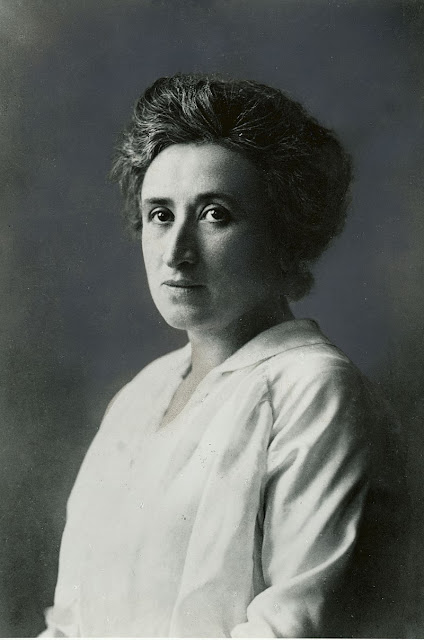1836 Stephen F. Austin died. Attribution: On This Day.
1867 Dakota Territorial Legislature creates Sweetwater County.
1890 The Union Pacific in Cheyenne received twelve new switch engines for distribution. Attribution: Wyoming State Historical Society.
1899 A shipment of 500 cats from New Jersey, being sent to the Philippines for "rat control," passes through Laramie, Wyoming, on the Union Pacific Railroad. That's a lot of cats.
Polish soldiers digging trenches in their 1918-1919 war against Imperial Germany.
The final stages of the collapse of Imperial Russia saw huge numbers of Polish troops join forces with any Russian rebels and the establishment of a defacto Polish state from Polish lands that had been under the crown. Indeed, not only did this occur, but Polish forces and rebels soon were engaged in combat with Ukrainian forces and rebels over what was Polish and what was not.
On this day, in 1918, that spread to Germany.
The collapse of the German war effort in World War One is such an important historical event that most histories of World War One simply end with that and treat the German Revolution as a bit of an epilogue. Histories of World War Two tend to treat it as a prologue. But what should be evident from reading these posts is that Imperial Germany didn't really end on November 11, 1918, or even before that when the Kaiser abdicated shortly before, but rather Imperial Germany sloppily turned the reins of government over to a provisional socialist government that found itself with a major domestic revolution on its hands from the hard left and the old Imperial Army with which to put it down. It was trying desperately to do so.
Contrary to what occurred after World War Two, the allied occupation following the Armistice of November 11 was quite limited in scope. This is also sometimes misunderstood. The occupation following the Second World War was intended to totally demilitarize and remake Germany. The 1918 one was not, but instead was intended merely to prevent a resumption of the war with the West. It was quite limited, but strategic, in scope.
Occupation zones following November 11, 1918. 'Armistice and occupation of Germany map', URL: https://nzhistory.govt.nz/media/photo/armistice-and-occupation-germany-map, (Ministry for Culture and Heritage), updated 15-Jun-2017
Indeed, the occupation zones were actually frankly anemic and basically were simply sufficient for the Allies to create a strong defense on the south bank of the Rhine with bridgeheads over it, in case of a resumption of the war. That this was highly unlikely was obvious by the behavior of the Allies themselves, who immediately began to repatriate their soldiers and sailors to their homes and discharge them. While I disagree with those who insist on the Versailles Treaty being the date that ended all doubt, this map gives them a point.
Cheyenne readers on this learned that Wyoming Guardsmen would definitely be overseas for awhile.
Wyomingites in the 91st Division would be remaining overseas as well. On the positive side, it seemed that American troops were getting along well with German civilians.
As does the behavior of Germany itself, within its borders. The German Army was very active, where it could be, but it couldn't be everywhere, and it was effective everywhere it was.
On December 24, the German Army had been defeated in a street battle with Berlin by Red Sailors and Kreigsmarine and soldiers who had gone over to the Reds. Lots of significant towns were in the hands of Red revolutionaries who intended to form a communist government. The provisional socialist government Weimar was struggling to retain power and not go down in a Red revolution.
On this day, the Poles added to their troubles.
The Posen region of Imperial Germany, a major coal producing region of the state, had always really been Polish. The German Empire had been just that, and like the Austrian Empire it included people who were not German by ethnicity within its borders, although not nearly to the same extent that was the case in the Austro Hungarian Empire. Included in that were regions of what had been Poland and which were among its oldest possessions.
Prussian province of Posen, Polish regions in yellow.
The Poles had been subjects of conquest by neighboring Prussia back into Medieval times. In more recent times the Germans had participated in the dismemberment of what remained of Poland. The Poles, in spite of a late German effort, had never been absorbed by the Germans who had always looked down upon them. With the Poles reforming their country out of the Polish regions of Russia, it was inevitable that Poles in Posen would attempt to break away and joint them.
What wasn't inevitable was that it would work, but it did. The Polish rebels were largely successful in a two month long war with Germany which saw them seize control of most of the region. On February 16, 1919 with a renewed armistice involving the Poles and the Germans imposed by the Allies. The Versailles Treaty would settle the territorial question in favor of Poland.
Cartoon in the New York Herald, December 27, 1918. This cartoon is only quasi clear. It was celebrating the concept of a League of Nations, but are the little dachshunds republics made up of a dismembered German state?
On that treaty, the British were very strongly backing a League of Nations, and that was starting to get some press, and some discussion in the United States, where views were initially quite favorable.
Training in the US kept on in other places, exploring the newly learned and newly acquired.

1926 1,000 rabbits shot near Medicine Bow and sent to Rawlins, Wyoming, to feed the hungry.
From the Trib's this "A Look Back In Time" column.
.
1941 American authorities in the Philippines declared Manila an open city.
1900 Carry Nation carried out her first public smashing of a bar, at the Carey Hotel in Wichita, Kan.
1979 Soviet forces seized control of Afghanistan.










































.jpg)